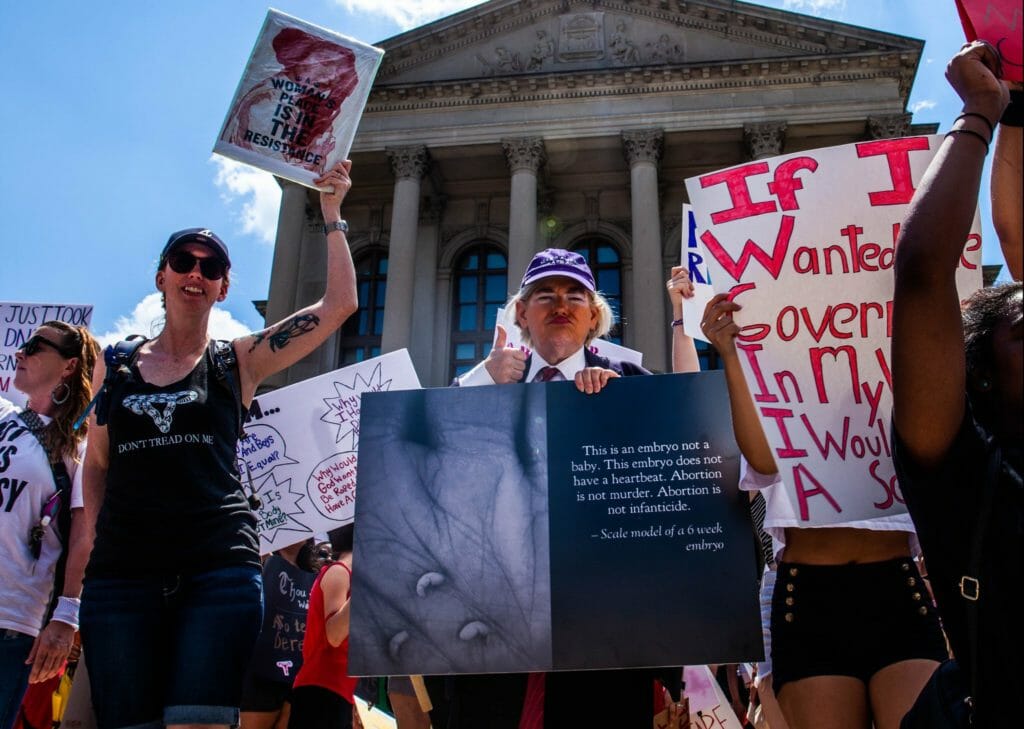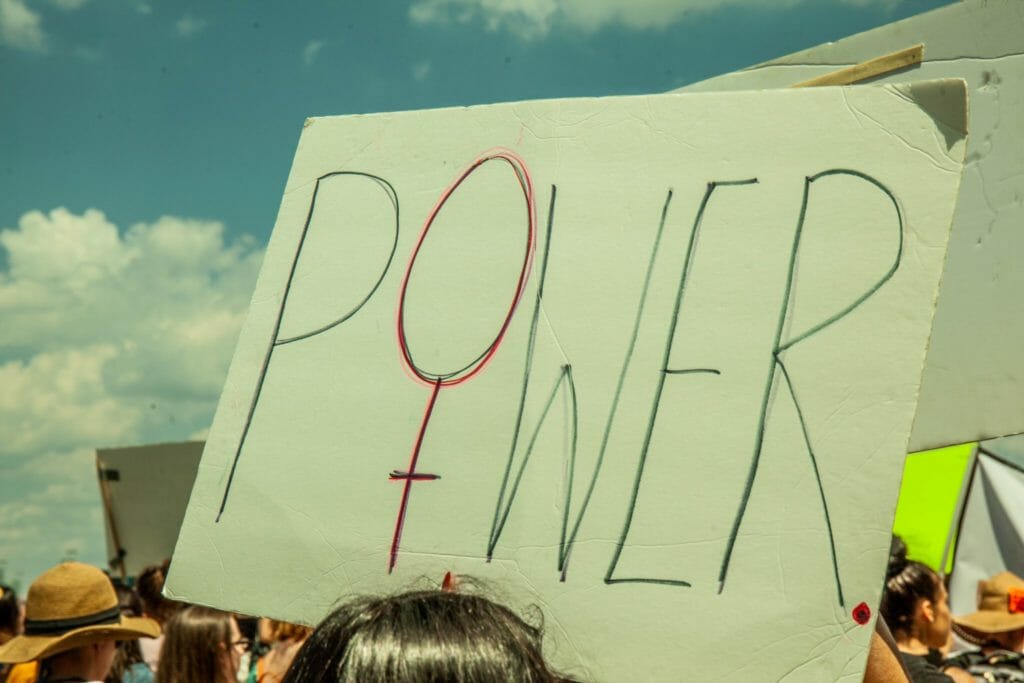Originally published in print on Dec. 19, 2019.

“If the majority of Americans had not spent decades turning away from the horrors of the prison-industrial complex, they would be far less tolerant of the terror that is currently unfolding against migrants.” — Maya Schenwar & Kelly Hayes, Truthout
The year is 2019. The U.S. economy is teetering on the edge of another recession. Donald Trump is president and awaiting impeachment. Abortion bans are sweeping the nation state by state. Flint’s water is still in question. California is on fire. The term “immigration policy” is an oxymoron.
I often find myself contemplating the hollowness of the word “reform.” We have so many senators and congressional leaders advocating for immigration reform, prison reform, tax reform. These three especially are so closely knit that the elusive reform of one would irritate the others greatly. (Hint: intersectionality is multifarious and a huge theme in everything. Not in the pro-acid EvErYtHiNg Is CoNnEcTeD way, but in the common-sense-of-the-laws-of-physics kind of way.)
Therefore, it is important to break down political buzzwords, like “reform,” to prove they are contextually representing what they are meant to in the present day.
Over the summer, we saw a major shift in focus towards immigration when mass media circuits (finally) paid some attention to the horrendous conditions for undocumented immigrants. Rep. Alexandria Ocasio-Cortez was notably the first to outright call these ICE immigration detention centers what they really are: concentration camps, which is a phrase literally used to describe a constructed and established place in which to hold a population of people.
The term makes us mentally drift back to WWII, to the mass genocide of millions of Jews. There are those who either a) agree that ICE detention centers are indeed concentration camps; b) are, for one reason or another, suddenly extremely hesitant to compare a historical monstrosity to present day U.S. immigration policy; or, c) those who are in absolute denial and in a mindset that criminalizes the undocumented immigrants in question.
The U.S. prison system is both public and private, and ICE is currently utilizing private prisons as detention centers for immigrants and has been for some time.
However, this needs to be laid to rest: ICE detention centers and the utilization of preexisting jails and prisons to hold, detain, and imprison immigrants regardless of their immigration status without the right to due process in rigid and inhumane conditions, constantly under militarized police presence, separated from loved ones despite age and circumstance, are all characteristics of the concentration camps we might recall from WWII. And yes, people are dying in these detention centers.
What we have here is a very terrifying system of institutionalizing immigrants, and it’s one that mirrors and is enmeshed in our prison system. The U.S. prison system is both public and private, and ICE is currently utilizing private prisons as detention centers for immigrants and has been for some time. As a result, the private prison sector is making a shit ton of money from detaining immigrants as they receive stipends from the government in exchange for keeping maintenance costs lower than public prisons. The more beds they can fill, the more federal funding they can receive. Stewart Detention Center in South Georgia is a prime example; the prison is operated by Corrections Corporation of America, and contracted by ICE. Atlanta City Detention Center is an example of a public city jail that houses ICE task forces and immigrant detainees.
The largest names we see in the private sector are the Corrections Corporation of America (CCA), CoreCivic, GEO Group, and Management and Training Corporation. In 2015, CCA reaped $1.9 billion in revenue, according to Mother Jones. As reported by the New York Times in 2018, CoreCivic became the leader in the roughly $4-billion-a-year industry. CNBC reported in June 2018 that GEO Group donated hundreds of thousands of dollars to a Trump super PAC, hosted its annual leadership convention at one of the Trump golf resorts, and saw its stocks soar immediately after Trump’s election. Further, the Vanguard Group—one of the world’s largest investment companies—is a primary investor of CCA and owns a massive portion of its shares, therefore making anyone with investments under Vanguard complicit in directly funding the private prison industry whether they realize it or not.
Everyone loves to throw around the term prison industrial complex; conservatives more facetiously than liberals most of the time. Neoliberal politics often portrays the prison-industrial complex the same way they would chem trails—like a conspiracy theory with bountiful proof, but for some reason, no one’s paying attention. But it’s not that nobody’s paying attention; it’s simply that being liberal doesn’t make one anti-capitalist, and a lot of our congressional leaders (on the left and the right) have a dog in the fight for the prison industry. And needless to say, they’re making fat stacks.
Critical Resistance, a national grassroots organization building a movement towards abolition, defines the prison industrial complex as the “overlapping interests of government and industry that use surveillance, policing, and imprisonment as solutions to economic, social, and political problems.” Other definitions of PIC explain that it is the “rapid expansion of the U.S. inmate population to the political influence of private prison companies and businesses that supply goods and services to government agencies for profit.” Additionally, agents of the PIC include prison labor, construction companies, surveillance technology vendors, companies that operate prison food services and medical facilities, prison guard unions, private probation companies, lawyers, and lobby groups that represent them.
The PIC does create a multitude of jobs and profit opportunities—from the construction of detention centers and prisons, to contracts with companies that provide said centers with literal beds, tables, chairs, and food, to the employment of thousands of guards and wards. Prisons are indeed industries. And business is a-boomin’.
TL;DR: more detention beds and more detention time equals more profit for private prison sectors which help line Trump’s and other beneficiaries’ pockets.
In these detention centers, there’s a lot of fucking people and a lot of fucking money flowing. According to the Guardian in September 2018, on any given day there are more than 52,000 immigrants confined in jails, prisons, tents (which they started building out when children were being removed from family beds), and other forms of detention—most of them for profit. The number of immigrants detained in the U.S. over the course of the entire year in 2019 approaches 500,000, which is twenty times more than its annual detainment numbers in 1979.
It’s immoral, yes, but completely legal.
Long story short, this complex network of goods and services provides blatant economic benefits at the expense of the prison population (and taxpayers alike, but this article isn’t about us—stay angry), making prisoners the vital proponent to ensuring that this industry is a persistently lucrative one. It’s immoral, yes, but completely legal.
Since immigrants do not possess the same rights as U.S. citizens, they are not entitled to legal representation and they carry their own burden of proof, meaning they are not innocent until proven guilty like our judicial system normally allows. The entire detention process for an immigrant varies, with the Huffington Post reporting an average of 37 days of awaiting deportation and an average cost of over $10,000 per person. These individuals aren’t held forever, because deportation processes are in such high demand while being a great source of revenue for every step in the process.
In ICE’s 2018 budget, it stated that a “Longer Average Length of Stay (ALOS) will also drive the need for additional detention beds.” Following this report, GEO Group officials announced they were expecting earnings to rise with increased immigration detention time. This is an overlap of government and industry interests that uses imprisonment as a means to turn a profit, making immigration a pipeline in the prison industrial complex.
So yes, when we talk about immigration’s placement in an ICE detention center that is privately operated yet publicly funded by taxes, such as the GEO Group’s Adelanto ICE Processing Center in California, this raises many issues of what appears to regular, everyday people as cost negligence. According to the Huffington Post, taxpayers paid $1.2 billion for immigration detention in 2016. That’s not even including the cost of the millions of prisoners we claim as ours.
Which brings me to my next point: the actual criminalization of the process of immigration and the people who do it. Trump has a plan to deport 11.2 million undocumented U.S. immigrants, which is threatening a cost of $600 billion, as figured by the American Action Forum in 2015. And since this billion dollar price tag is a significant threat to our gross domestic product, economic think tanks are also raising the question of what would happen to our working class if we effectively deport them all. Who will farm the land and work the kitchens in restaurants?
I’m wondering who’s going out to dinner in a functioning police state, anyway.
Because that is what Trump is setting into high gear: the complete and total cohesion of military and police with ICE and Homeland Security acting as liaisons. This isn’t meant to invoke hysteria, but just as ICE detention centers are indeed concentration camps, the U.S. is presently evolving into a police state. Trump\’s plans involve a process of mass incarceration at the borders of this country and a very messy process of deportation that displaces people on a global scale to further fortify our national boundaries as geographical laws that, when overstepped, are instantly violated. Mass deportation would then trigger a booming industry that requires man hunting, incarceration, and defilement of human beings in order to sustain itself; and in turn, this necessitates ultimate cohesion and reorganization of local/state police and military task forces.
Trump claims he wants to build a wall, but with profits in mind, he might not want to keep undocumented immigrants out of this country; he may just want to further criminalize their existence. Because by criminalizing immigrants’ existence, he’ll continue to keep those detention beds full, piling on more stacks of profit.
In light of this, there’s almost no point in sympathizing with any liberal agenda that seeks to make a distinction between the alleged drug lords and the exhausted working class father with an expired green card.
In light of this, there’s almost no point in sympathizing with any liberal agenda that seeks to make a distinction between the alleged drug lords and the exhausted working class father with an expired green card. When imprisonment is this industrialized and this profitable, the system simply calls for bodies, not characters. Characters make for good news stories; illegal bodies make for good vessels of revenue. Corporate entities and their backbone politicians only see numbers.
Immigration through the lens of the prison industrial complex makes for a very dismal reality. It really isn’t about “legal vs. illegal,” “documented vs. undocumented.” It’s about how can we keep the prison industrial complex, aka legalized slavery, profitable and running? It almost serves as an erasure of justice coming to fruition. Unfortunately, as it stands, immigration is a billion-dollar industry funded by taxpayers that has become integral to maintaining whatever stability is left in our economic playground. The militarization of ICE and the egregious policing and incarceration of undocumented immigrants is an attack on human rights for the benefit of a few rich people. Immigration is a pyramid scheme.



